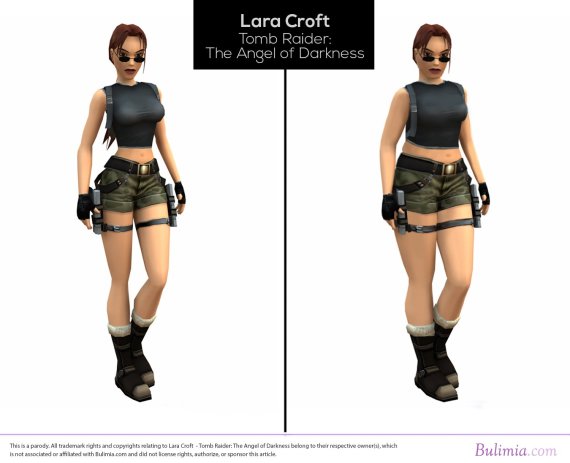Challenging the Media’s “Body Misconceptions”
The media is full of examples showing us how men and women are expected to look. From magazine advertisements portraying women as sex objects to late night info-mercials selling men on “bigger junk,” there’s been this misconception pushed on society by the media that our bodies should be the “perfect” shape and size. This mentality has led to a host of issues, from teenage girls developing eating disorders (in hopes of fulfilling the gender stereotypes that portray women as a size 0) to boys and men viewing women only as sex objects in need of domination. Luckily, there are some courageous companies challenging these bodily misconceptions.
One such company is an online resource known as Bulimia.com, who has challenged the video game industry’s depiction of women in gaming. Female characters have been traditionally portrayed as fantasy sex objects, scantily clad and baring an irresponsible amount of skin. Think of characters like Lara Croft (Tomb Raider), Tifa Lockheart (Final Fantasy) or Jade (Mortal Combat): their outfits leave little left to the imagination! And yet, it’s the sizes of these women’s bodies that are just as problematic.

If the women seen in video games were in the actual world, their bodies would be disproportionately undersized, emaciated, and unhealthy. That’s why Bulimia.com has taken to raising awareness about the dangers of such unrealistic standards. The website pointed out that the characters' ultra-slim waistlines and disproportionate cleavages were nearly universal throughout the industry1.
To young gaming girls, seeing their heroines with malnourished, photo-shopped proportions, this begins to set the standards of beauty for what society expects of these girls too. It’s just one more unhealthy depiction of women, with a focus upon their bodily attributes and nothing else. What message does this send to a young girl about her importance in society?
Without honest portrayals of women, in all shapes and sizes, there becomes an unhealthy (and unrealistic) standard of beauty. This social norm is ultimately impossible to uphold without developing dangerous habits, such as eating disorders, flash dieting, and self-esteem issues. When young girls develop an overly critical mentality of how women are expected to look, they may also begin to question why their bodies don’t match the perceived societal ideal.
This tradition in gaming needs to change. We must hold the media accountable for its portrayal of women and men, and begin to challenge these dangerous social norms.

- Romano, A. (2015, July 23). Bulimia website Photoshops video-game women with realistic proportions. Retrieved September 11, 2015.
